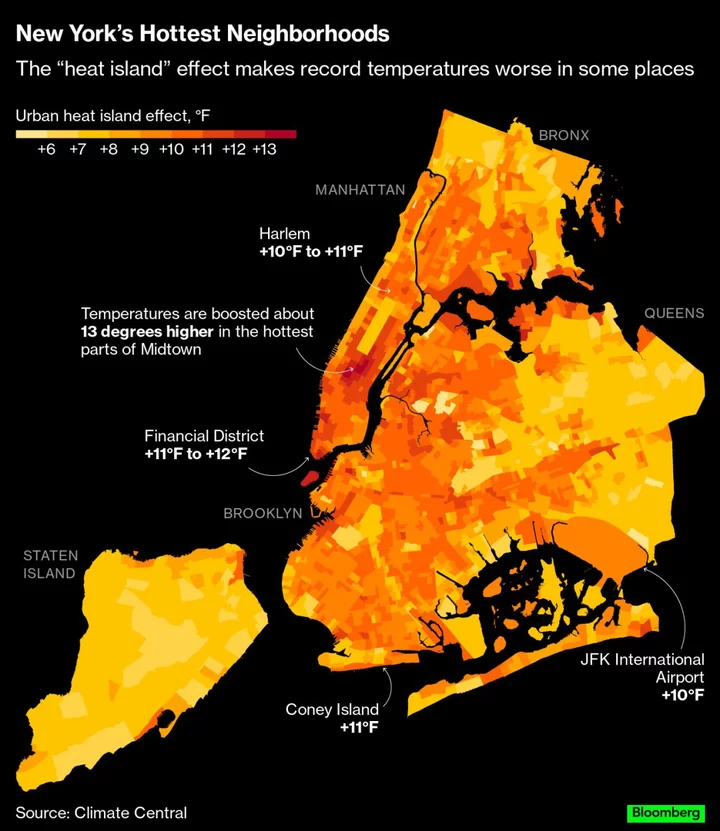The US heat wave has come to New York City, delivering temperatures in the mid- to upper-90s and the first excessive heat warning in two years. But thanks to what researchers call the “heat island effect”— when excess concrete and scarce shading combine to raise the temperature — some neighborhoods will swelter more than others.
Parts of Midtown, for example, are on average 1-2F hotter than the Financial District; people heading home to the Upper West Side, Fort Greene or Clinton Hill will get a significant reprieve. Densely populated parts of Queens are also extra-hot, but the heat island effects lessen in the leafier, more suburban parts of the borough.
In a press conference Thursday, New York City Mayor Eric Adams outlined the city’s response to the immediate heat advisory, and also said New York would develop a “maximum summer indoor temperature policy” that could require landlords to provide cooling, the same way they’re required to provide heat in the winter. “We know this is a real crisis facing the globe,” he said. “And so we will be prepared.”
Overall, “more New York residents experience the impacts of the urban heat island effect than in any other city in the US,” said Peter Girard, a spokesperson for Climate Central. The New Jersey nonprofit looked at the heat island effect in the 44 biggest US cities, home to almost 1 in 4 Americans. More than half have been exposed to elevated temperatures — 8F degrees higher than if the same neighborhoods were developed with more vegetation or paved with permeable surfaces.
“Thermometers in a hot neighborhood could show 100 degrees while nearby communities record 95 degrees,” Girard said. “The features of the local built environment is the difference.” Among New Yorkers, close to 80% of residents are experiencing this effect, the largest share among the cities Climate Central surveyed.
Read more: Mapping the Coolest Places Inside the World’s Sweltering Cities
The phenomenon occurs when concrete surfaces absorb and re-emit heat which, with little shade and limited air circulation, makes high temperatures even higher. In any city, the heat effects vary widely by neighborhood, which is obvious to the crowds that swarm parks, pools and waterfronts during very hot days. In Manhattan, Central Park is an oasis.
Though the average temperatures might be higher, only half to two-thirds of people who live in Phoenix and San Antonio experience the heat island effect. Those places are more sprawling, but they’ve also been built to withstand high temperatures, using lighter building and paving materials which reflect, instead of absorb, heat.
Age, too, is an important factor: Older cities tend to be denser, with high buildings and narrow streets that restrict air flow. Younger cities, according to Girard, often have wider streets, lower structures and less population density, all of which helps keep them cool.

